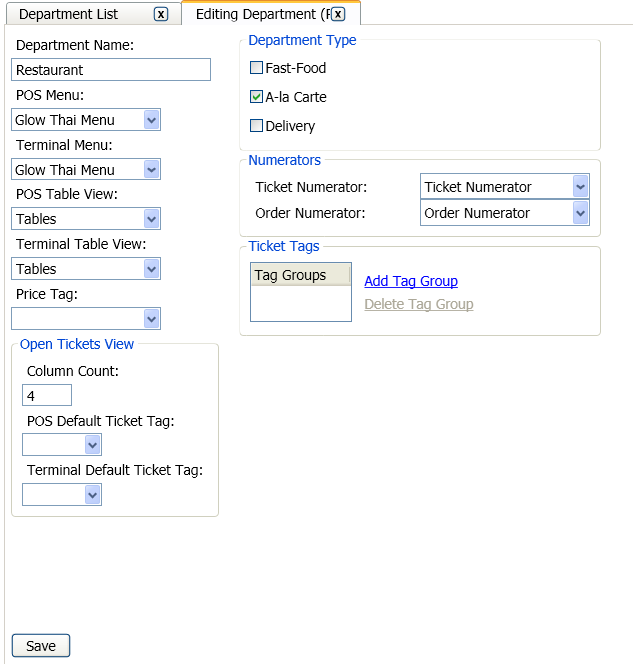Languages:
Links
Languages:
Links
This is an old revision of the document!
The A-la Cart department type represents the dine-in portion of our example restaurant. This designation is important, because it models the kind of workflow needed to run the dining room. When implementing a POS, you must consider, from a pure process perspective, the events that occur from the time a customer enters the establishment and indicates that he or she wants to eat-in, until the time that customer pays and departs. Each operation is slightly different, but most conform to the following processes:
These steps are modeled in different areas of Sambapos configuration, but start in the departments designation. The following screenshot is an example of an in-production a-la cart department:

is the name of the department of the restaurant. This name becomes the text on the bottom of the POS screen that the server clicks/touches to switch between delivery, dine-in, and take out departments. Larger operations can have seperate terminals for each of these departments if needed. This functionality is covered in the “Terminals” configuration screen.
indicates the menu used by the POS server software for this department.
indicates the menu that is displayed by the terminal. In some configurations, the terminal menu might be a subset of the POS menu, or might be formatted differently for a different screen.
is the graphical layout of tables within the restaurant. Laying out tables graphically can help new servers find a table faster, as the layout can be relative to the POS physical position within the restaurant. It also looks better :)
is the graphical layout of tables within the restaurant. Laying out tables graphically can help new servers find a table faster, as the layout can be relative to the POS physical position within the restaurant. It also looks better :)
(requires review)
sets the configuration for the view of tickets within the POS software. Here, you set the number of columns, and the tag that indicates the name of the POS or terminal that the order was entered from. (requires review)
indicates the type of the department, as documented in departments.
specifies the internal counters for tickets and orders. Each ticket and each order get's a unique number, generated in sequence, to help the software (and the operator) identify a particular ticket.
(requires review)